
Captain Gordon Christopher Greene (September 8, 1862 - January 20, 1927), was the owner of the Greene Line of river steamboats. [1]

Captain Gordon Christopher Greene (September 8, 1862 - January 20, 1927), was the owner of the Greene Line of river steamboats. [1]
He was born on September 8, 1862, in Newport, Ohio. In 1890 he started the Greene Line of river steamboats with Henry K. Bedford. He married Mary Catherine Becker in 1890 and had three sons, Christopher Becker Greene, Henry Wilkins Greene, and Thomas Rea Greene. [2] The Gordon C. Greene ship was built in 1923. [3]
He died on January 20, 1927, in Hyde Park, Cincinnati in Ohio. [1] He was buried in Newport Cemetery in Ohio. After his death, his widow Mary served as company head and became one of the only women pilots on the river. [4]

Covington is a home rule-class city in Kenton County, Kentucky, United States. Located at the confluence of the Ohio and Licking rivers, it lies south of Cincinnati, Ohio, across the Ohio and west of Newport, Kentucky, across the Licking. It had a population of 40,691 at the 2020 census, making it the largest city in Northern Kentucky and the fifth-most populous city in the state. A part of the Cincinnati metropolitan area, it is one of Kenton County's two seats, along with Independence.

A steamboat is a boat that is propelled primarily by steam power, typically driving propellers or paddlewheels. Steamboats sometimes use the prefix designation SS, S.S. or S/S or PS ; however, these designations are most often used for steamships.
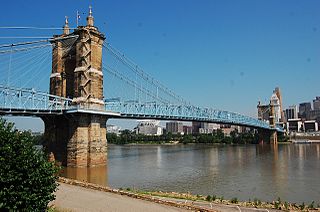
The John A. Roebling Suspension Bridge is a suspension bridge that spans the Ohio River between Cincinnati, Ohio, and Covington, Kentucky. When opened on December 1, 1866, it was the longest suspension bridge in the world at 1,057 feet (322 m) main span, which was later overtaken by John A. Roebling's most famous design of the 1883 Brooklyn Bridge at 1,595.5 feet (486.3 m). Pedestrians use the bridge to get between the hotels, bars, restaurants, and parking lots in Northern Kentucky. The bar and restaurant district at the foot of the bridge on the Kentucky side is known as Roebling Point.

The Delta Queen is an American sternwheel steamboat. She is known for cruising the major rivers that constitute the tributaries of the Mississippi River, particularly in the American South, although she began service in California on the Sacramento River delta for which she gets her name. She was docked in Chattanooga, Tennessee and served as a floating hotel until purchased by the newly formed Delta Queen Steamboat Company. She was towed to Houma, Louisiana, in March 2015 for refurbishing to her original condition.

Tall Stacks, formally known as the Tall Stacks Music, Arts, and Heritage Festival, was a festival held every three or four years in the Cincinnati, Ohio, USA, area, which celebrated the city's heritage of the riverboat. The sixth edition was held on October 4 to 8, 2006. The festival typically featured a number of vintage and replica steamboats from across the eastern United States, which docked along the Ohio River shoreline in Cincinnati and across the river in Covington and Newport, Kentucky.
Samuel Hannaford was an American architect based in Cincinnati, Ohio. Some of the best known landmarks in the city, such as Music Hall and City Hall, were of his design. The bulk of Hannaford's work was done locally, over 300 buildings, but his residential designs appear through New England to the Midwest and the South.

The Defense of Cincinnati occurred during what is now referred to as the Confederate Heartland Offensive or Kentucky Campaign of the American Civil War, from September 1 through September 13, 1862. Confederate Brigadier General Henry Heth was sent north from Lexington, Kentucky, to threaten Cincinnati, Ohio, then the sixth-largest city in the United States. Heth was under orders from his superior, Major General Edmund Kirby Smith, not to attack the city, but to instead make a "demonstration". Once Heth arrived and reconnoitered the defenses, he realized an attack was pointless. After a few minor skirmishes, he took his men back to Lexington.

The Great Steamboat Race is an annual steamboat race, taking place the Wednesday before the first Saturday of May, three days before the Kentucky Derby, as part of the Kentucky Derby Festival. The race was first run in 1963 and it takes place on the Ohio River in the span that runs between Louisville, Kentucky and Jeffersonville, Indiana. Until 2009, the race was traditionally between the Belle of Louisville and the Delta Queen, although other steamboats have participated. Since 2009, the Delta Queen has not participated due to ownership and legal issues, and the Belle of Cincinnati has taken its place in the competition. In 2012, the Belle of Louisville and Belle of Cincinnati were joined in the race by the American Queen.
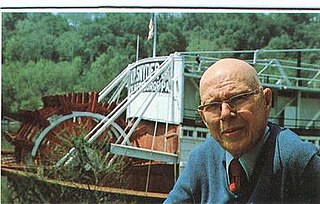
Fredrick Way Jr. was the youngest steamboat captain on the Ohio River and Mississippi River. He was the author of books on the boats that ply the inland waterways. He supervised the flat-bottom, stern paddlewheeler, the Delta Queen, from San Francisco, down the Pacific coast, through the Panama Canal, across the Gulf of Mexico and up the Mississippi and Ohio rivers to Pittsburgh in 1946.

The history of steamboats on the Oregon Coast begins in the late 19th century. Before the development of modern road and rail networks, transportation on the coast of Oregon was largely water-borne. This article focuses on inland steamboats and similar craft operating in, from south to north on the coast: Rogue River, Coquille River, Coos Bay, Umpqua River, Siuslaw Bay, Yaquina Bay, Siletz River, and Tillamook Bay. The boats were all very small, nothing like the big sternwheelers and propeller boats that ran on the Columbia River or Puget Sound. There were many of them, however, and they came to be known as the "mosquito fleet."

Dixie Selden was an American artist. She studied with Frank Duveneck, who was a mentor and significant influence, and William Merritt Chase, who introduced her to Impressionism. Selden painted portraits of Americans and made genre paintings, landscapes and seascapes from her travels within the country and to Europe, Asia, the Middle East and Mexico. She helped found and was twice the president of the Women's Art Club of Cincinnati. Her works have been exhibited in the United States. She was one of the Daughters of the American Revolution and on the Social Register.
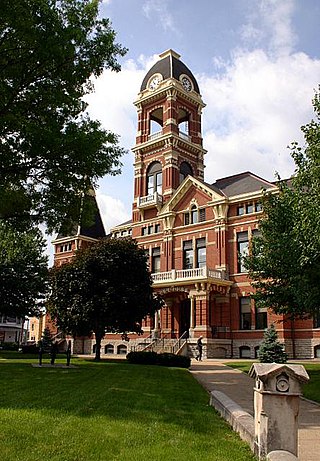
Albert C. Nash (1825-1890) was an American architect best known for his work in Milwaukee and Cincinnati.

The H. K Bedford was a passenger and trade ship of the Greene Line.
Gordon C. Greene was a paddle steamer, launched in 1923, that operated under several names before sinking in St. Louis in 1967.
Captain Christopher Becker Greene was the head of the Greene Line of steamboats after the death of his father.

Captain Thomas Rea Greene was president of the Greene Line of steamboats.
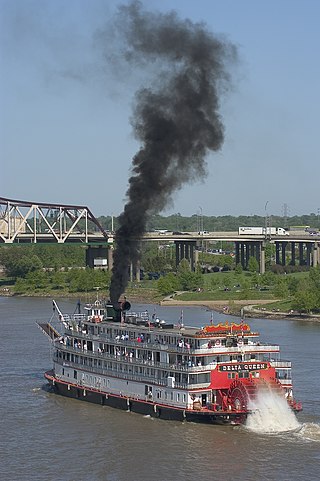
The Greene Line was a line of river steamships along the Ohio River. The name was changed in 1973 to Delta Queen Steamboat Company.
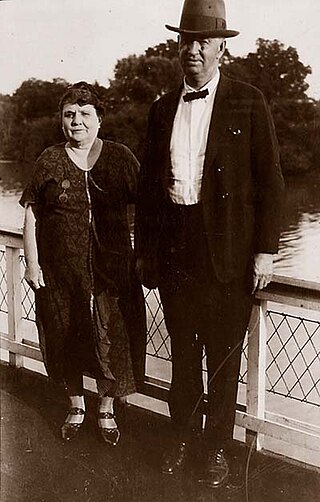
Captain Mary Becker Greene, was steamboat captain of the Greene Line of river steamboats. She was the only female steamboat captain in Ohio.

Callie M. Leach French was an American steamboat captain and pilot. For much of her career as a captain, she worked with her husband, towing showboats along the Ohio, Monogahela and Mississippi Rivers. She played the calliope, cooked, sewed, and wrote jokes for the showboat theater. She never had an accident in her career and was the first woman to hold a masters and pilot's license for a steamboat.

Betty Blake was an American historic preservationist and promoter. She was best known for preserving historic riverboats in Cincinnati. Her biggest preservation project was helping to save the Delta Queen.
Captain Gordon C. Greene, owner of the Greene line of river steamboats, died at his home here today. Like the skipper of the Mary Gloster , celebrated by ...
... Mary Becker Greene (1867-1949) married Gordon C. Greene in 1890 and raised three sons - Captain Chris, Captain Tom, and Henry Wilkins. She learned navigation and earned a pilot and masters license, becoming one of the most noted figures on the Ohio and Mississippi rivers for more than a half century. The "Greene Line" fleet continued to expand with additions of the "Gordon C. Greene" and the "Delta Queen." Captain Mary Greene served as hostess on these steamboats. She died at the age of 81 on the renowned "Delta Queen," a National Historic Landmark.
After Gordon died in 1927 Mary and her two sons, Chris and Tom (both Captains) ran the company. Captain Chris Greene died in 1944 leaving Mary and Tom to run the Greene Line. Mary died shortly after Tom Greene had brought the Delta Queen to Cincinnati in 1949. There is a life-size bronze statue of Captain Mary Becker Greene on the Covington-Newport Kentucky riverwalk overlooking the Cincinnati riverfront. Captain Tom Greene then died in 1950. It was now up to Tom's widow Mrs. Tom (Letha) Greene to take over the reins of the Company. The Greene line was in financial difficulties due to the purchase and renovations of the Delta Queen so Letha was forced to sell all the Greene line boats except the Delta Queen.